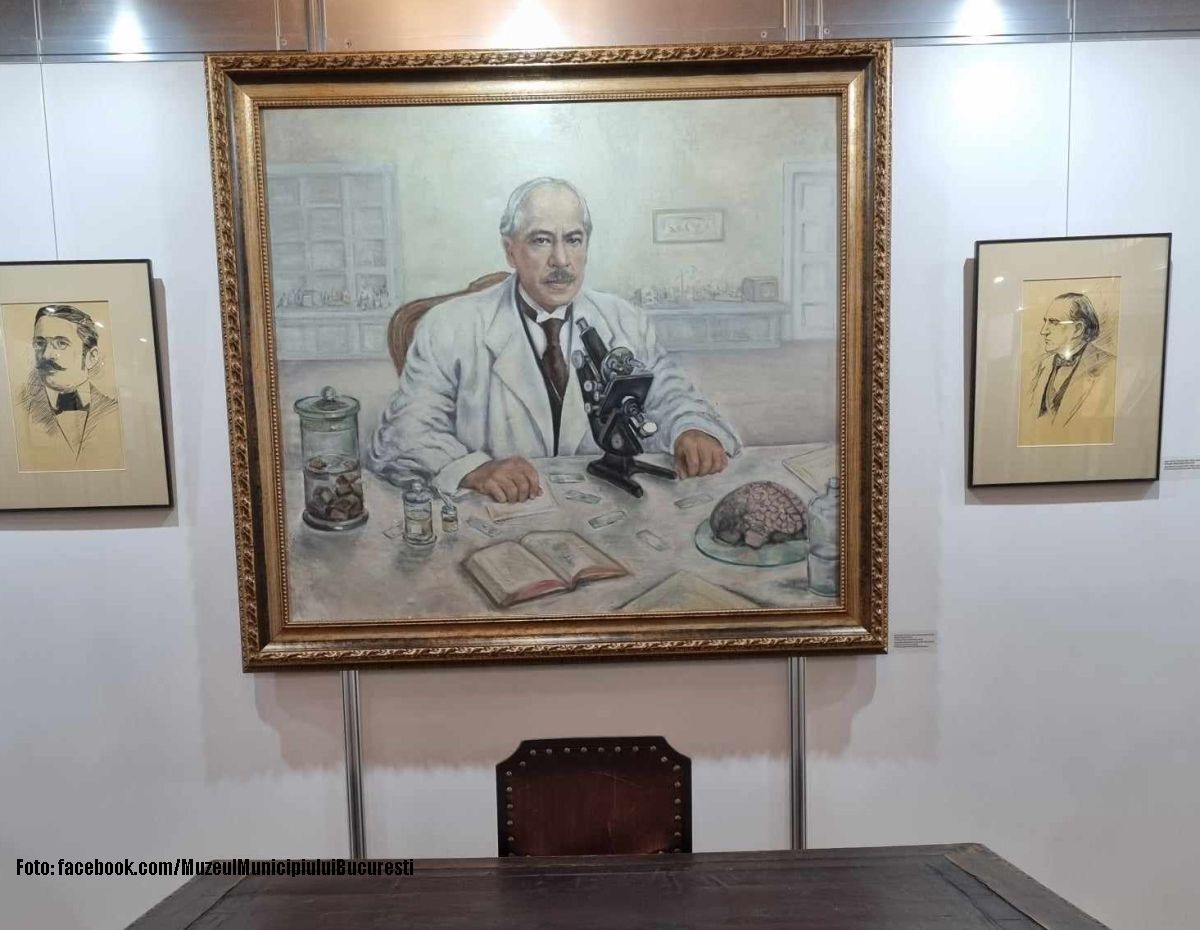The neurologist Gheorghe Marinescu
Considered to be one of the most important Romanian physicians, Gheorghe Marinescu’s name is linked to the birth of neurology in this country.

Steliu Lambru, 11.08.2024, 14:00
Considered to be one of the most important Romanian physicians, Gheorghe Marinescu’s name is linked to the beginning of the study of mental illnesses and the birth of neurology in this country. He was born in Bucharest in 1863 and died in 1938, aged 75, also in Bucharest. He studied medicine in Bucharest and in 1889 left for Paris to further his studies at the clinic of the famous French neurologist Jean-Martin Charcot. He also went on study trips to Germany, Great Britain, Belgium and Italy. In 1897 he is awarded the title of doctor in medicine from the Faculty of Medicine in Paris. Most of his research is published in French magazines. He returned to Romania at the beginning of the 20th century and was elected member of the Romanian Academy and appointed professor at the Faculty of Medicine in Bucharest, while also working on the neurology ward of Colentina Hospital.
The Bucharest City Museum has four collections that used to belong to physicians: that of the microbiologist Victor Babeș, of the pathologist Nicolae Minovici, the radiologist George Severeanu and the neurologist Gheorghe Marinescu. An exhibition dedicated to Gheorghe Marinescu was hosted by the Suțu Palace which houses the Bucharest City Museum. Psychiatrist and professor of medicine history Octavian Buda said Marinescu had a complex career and his legacy is fundamental for the Romanian school of neurology:
“In essence, Gheorghe Marinescu concerned himself with what we would today call neuroscience. As a psychiatrist and historian of medicine, I have published several articles about Gheorghe Marinescu that also had international exposure. And I found myself finding it hard to explain what he did, because he used to conduct fundamental research in areas associated with neurology. These had to do with neuronal architecture, using very modern instruments for those times and trying to understand how the human brain works and many others.”
Marinescu trained in the best intellectual and scientific environments when he studied in the West. One of his teachers was the eminent neurologist Jean-Martin Charcot, who inspired many generations of famous physicians. Octavian Buda noted the overwhelming influence of Charcot on his students, including Marinescu:
“If you ask me who is the Romanian physician who is best-known internationally, it’s hard to say. But if we open a book of international history of neurology we’ll find the name of Mr Charcot, who led neurology in Paris, and who was a big success in cultural salons, as well. Everyone was fascinated with his personality, because he used photography and cinema, something which also influenced Marinescu. Charcot was a spectacular interface of Parisian and international scientific culture at the end of the 19th century. None other than Sigmund Freud was among those ecstatic about Mr Charcot’s courses. Marinescu never met Freud, but was influenced by the courses in medicine, psychology and psychopathology. Charcot was among the inventors of modern medicine. He can be criticised today for some of his ideas, but was a magnetic figure who built a whole school around him. And in that group was also Marinescu, the hard-working student from Bucharest, who was comfortable working with histological lamellae and analyse them in detail.”
After his return to Romania, a country that was modernising at a fast pace, Marinescu became a role model for the next generation of Romanian neurologists. Octavian Buda:
“Being a physician and having studied in Paris, he was feared by politicians. He was also quote intelligent, knew how to draw a line, and was part of a truly remarkable medical elite. So these objects that we have from him and his research, which was very detailed and very technical, reveal to us a man who wanted to stay abreast with what was new in his field and a man who was known internationally. He adapted many things from our university culture. We also see a man who was upset with the reality of his times. We can also see him as the witness to a society that was very civilised and very eager to import technology and culture.”
The exhibition project at the Bucharest City Museum features documents and objects that belonged to the doctor, including the projector he used in his study of mental illnesses that caused limb movement disorders.






























